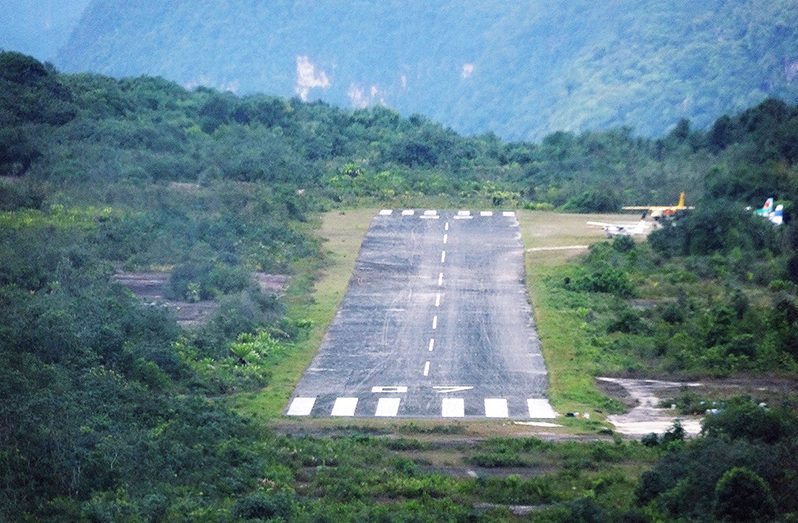-as gov’t sets out to boost tourism, connectivity, security
WITH the aim of boosting tourism and enhancing connectivity, work will soon commence to upgrade several airstrips in Guyana’s hinterland region, President Dr. Irfaan Ali has said.
The Head of State made the announcement at the recent commissioning of the Brigadier Gary Beaton Aerodrome at Eteringbang, Region Seven.
According to the President, works have already commenced to upgrade the Kaieteur Airstrip, where about 500 feet of runway remains to be completed.
He expressed optimism that the final section will be finished by March next year.
“That will not only boost tourism, but that will ensure we have a safe landing space there in Kaieteur,” he said.
Kaieteur Falls, one of Guyana’s most iconic natural wonders, draws thousands of visitors annually, and the completion of the airstrip is expected to significantly enhance access for both tourists and emergency services providers.
President Ali further detailed plans for another key airstrip development in the bordering community of Kaikan.
“From here, they’re going to go to another important border location in Kaikan, and we want that airstrip to be delivered by June,” President Ali explained. “So, they (engineers) have to put everything in place.”
In addition to these projects, two other strategic airstrips are set to be added to the portfolio managed by the Guyana Defence Force Engineering Corps. These are Camp Jaguar, which will be vital for security and operational purposes, and the Orinduik airstrip, which is critical for both regional connectivity and economic development in the area.
“Those two airstrips, Camp Jaguar and Orinduik, immediately, will be added, and work must commence before the end of the year,” President Ali stated. “The materials must be procured, and work must commence on these airstrips before the end of the year.”
The President also emphasised the importance of local community involvement in the upkeep of these airstrips. “In relation to this airstrip, we want to immediately restore the community contract for the maintenance of the airstrip,” he noted before highlighting the role that local communities will play in sustaining the infrastructure and ensuring its long-term viability.
These developments are part of a broader national strategy aimed at improving air travel access across Guyana, particularly in remote regions that are crucial for economic growth, tourism, and national security. The government’s investment in aviation infrastructure is expected to foster greater connectivity, while also positioning Guyana as a premier destination for eco-tourism.
As work continues on these projects, President Ali reiterated his commitment to improving Guyana’s transportation infrastructure and ensuring that the country’s remote regions are adequately served by reliable, modern facilities.
According to President Ali, these airstrips will not only enhance tourism, but will also ensure the safety and convenience of people, especially those living in the hinterland regions.



.jpg)











